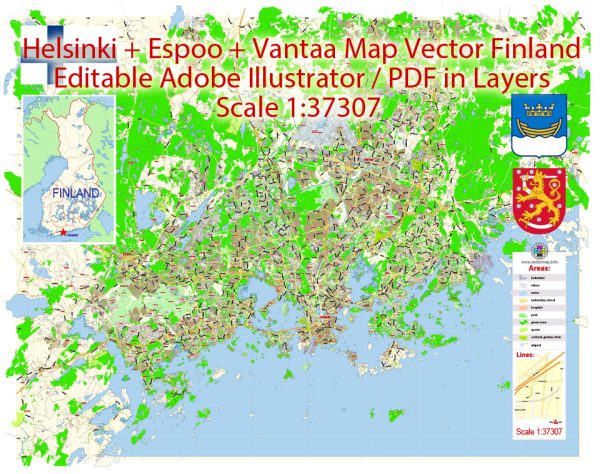Helsinki, Espoo, and Vantaa are three major cities in the Uusimaa region of Finland. Here’s a brief socio-economic description of these cities:
Helsinki: Helsinki is the capital and largest city of Finland. It is the economic, political, cultural, and educational center of the country. The city has a diverse and dynamic economy, with a strong focus on technology, education, research, and various service sectors. Key industries in Helsinki include information technology, finance, healthcare, design, and maritime industries. The city has a well-educated population, and it is home to several universities and research institutions. The standard of living is relatively high, but there is also some income inequality. The city is known for its excellent public services, efficient public transportation, and high-quality healthcare and education systems.
Espoo: Espoo is the second-largest city in Finland and is located just west of Helsinki. It is known for its high standard of living and excellent public services. Espoo is a hub for technology and innovation, with many technology companies and research organizations, including Aalto University, located in the city. The economy is diverse, with a strong presence of the information technology, healthcare, and service sectors. Espoo is known for its modern and sustainable urban planning, offering a mix of residential, commercial, and green areas.
Vantaa: Vantaa is the fourth-largest city in Finland and is situated to the north of Helsinki. Vantaa is often associated with Helsinki’s international airport, Helsinki-Vantaa Airport, making it an important transportation hub for the region. The city has a diverse economy, with a focus on logistics and transportation, as well as various service industries. Vantaa also has a growing residential community, with a mix of housing options. The city’s socio-economic profile is somewhat varied, with both affluent and more modest areas.
Overall, these cities benefit from Finland’s strong social welfare system, which includes universal healthcare and education. They are also known for their high quality of life, low levels of corruption, and safety, making them attractive places to live and work. However, like many urban areas, they also face challenges related to housing affordability, income inequality, and integration of a diverse population, including immigrants.


 Author: Kirill Shrayber, Ph.D.
Author: Kirill Shrayber, Ph.D.